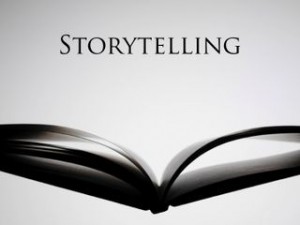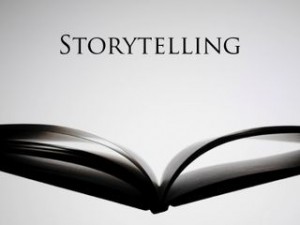 No matter what path we’ve taken to become communicators or marketers, I’d argue that the most fundamental skill we’ve all worked to develop is that of a storyteller. What I’ve seen in recent years — working with clients –is that storytelling is re-emerging as the most central of core competencies. CCOs and CMOs want more of it – a lot more.
No matter what path we’ve taken to become communicators or marketers, I’d argue that the most fundamental skill we’ve all worked to develop is that of a storyteller. What I’ve seen in recent years — working with clients –is that storytelling is re-emerging as the most central of core competencies. CCOs and CMOs want more of it – a lot more.
The problem: we’re getting so focused on volume – getting stuff out the door – that we’re often forgetting what it is about storytelling that makes people remember our stories, and — better yet – tell them again. And in the age of social media, isn’t that the very definition of being viral?
There’s a lot of science that goes into message development and testing, but it’s the packaging of the story – the art of storytelling– that makes it memorable and worthy of re-telling. Perhaps we never fully learned what makes a good story. Maybe we’ve become so wrapped in corporate/client deadlines and preferences that it’s become more about “getting it done.” But at the end of the day, our storytelling skills are compromised. Come on; admit it. Is your story telling the stuff that gets shared?
There’s no shame in admitting that you may not be as sharp as you need to be, or once were. The question is: What can you do about it? Here are a few things to help you rekindle your storytelling prowess.
- Create a storytelling world: It’s about a mindset. With everything you write, review and/or approve, remind yourself that it needs a real story in it. It should have a clear, compelling point, and –even better — an actionable response connected to it. Just as important, remember that your audience is pre-wired for a great story. Science shows our brains are wired to re-engage when they hear/see the words, “I have a story for you.” Is there even a story IN your work that can engage your target?
- Apply some discipline: Yes it’s an art form, but you can still put some discipline around storytelling. There are a lot of different “models” for what constitutes a story. But most will say that there’s a hero, a catalyst (character or event), conflict or juxtaposition, resolution and a moral to the story. Ask yourself, “Is there a story here? Does it have these elements in it? Do I care?” And these don’t have to be lengthy novels. Whether we know it or not, we’ve seen viral videos that deliver on all these fronts. Take a look at this one (no spoken words) and see if you can apply those elements. Dancing Boy
- Build it for the bigger world: Social media, in particular, requires not just one story, but an ongoing story. The same principles that apply to one story apply to “chapters” of many stories online. And, storytellers really need to think about how one story can be re-told, or re-purposed in lots of different on- and off-line forums. And for digital communications, in particular, we have to think visually – photos and videos — and apply the concepts of storytelling in those forums as well. Ask yourself – and your team –“Where else is this story going?”
- Play: That’s right, play. I realize this may be anathema to some of the more financially driven in the world of business, but unless you play with storytelling, you can’t get any better at getting your audience to engage with your communications. Play by learning; there are lots of great workshops to re-ignite your creative senses and storytelling prowess. Play by reading a story you’ve written out loud, or sharing with a colleague. Ask them for feedback : What’s missing? What didn’t make sense? What was out of order? And play by using tools to help you tell your story (see digitizing tips and resources below).
- Digitize it: There are a number of free resources on-line that let you take your story and play with it digitally. True, you need to set up an account (and provide your email), but these are easy tools that let you test new ways of digital story telling in creative ways. A few that I’ve found to be easy to use: Powtoon (www.powtoon.com); Prezi (www.prezi.com); GoAnimate (www.goanimate.com); Tellagami (www.tellagami.com); and Storify (www.storify.com). All of them have increased capabilities with paid membership, but their free versions give you plenty of opportunities to see if they work for you. You’d be surprised how easy they are to use, and how easily shared your creations can be.
To be honest, some professionals are just plain wired to be better storytellers than the rest of us. But that doesn’t mean we all can’t get better by re-framing our approach to the craft, applying discipline, exploring ways to tap into our creative capabilities and – yes – playing. I know when I teach storytelling modules, participants change their body language immediately when I say the words, “I want to tell you a story” (try it the next time you have a presentation, and you’ll see the human brain – and body – react).
That’s a story worth sharing.


